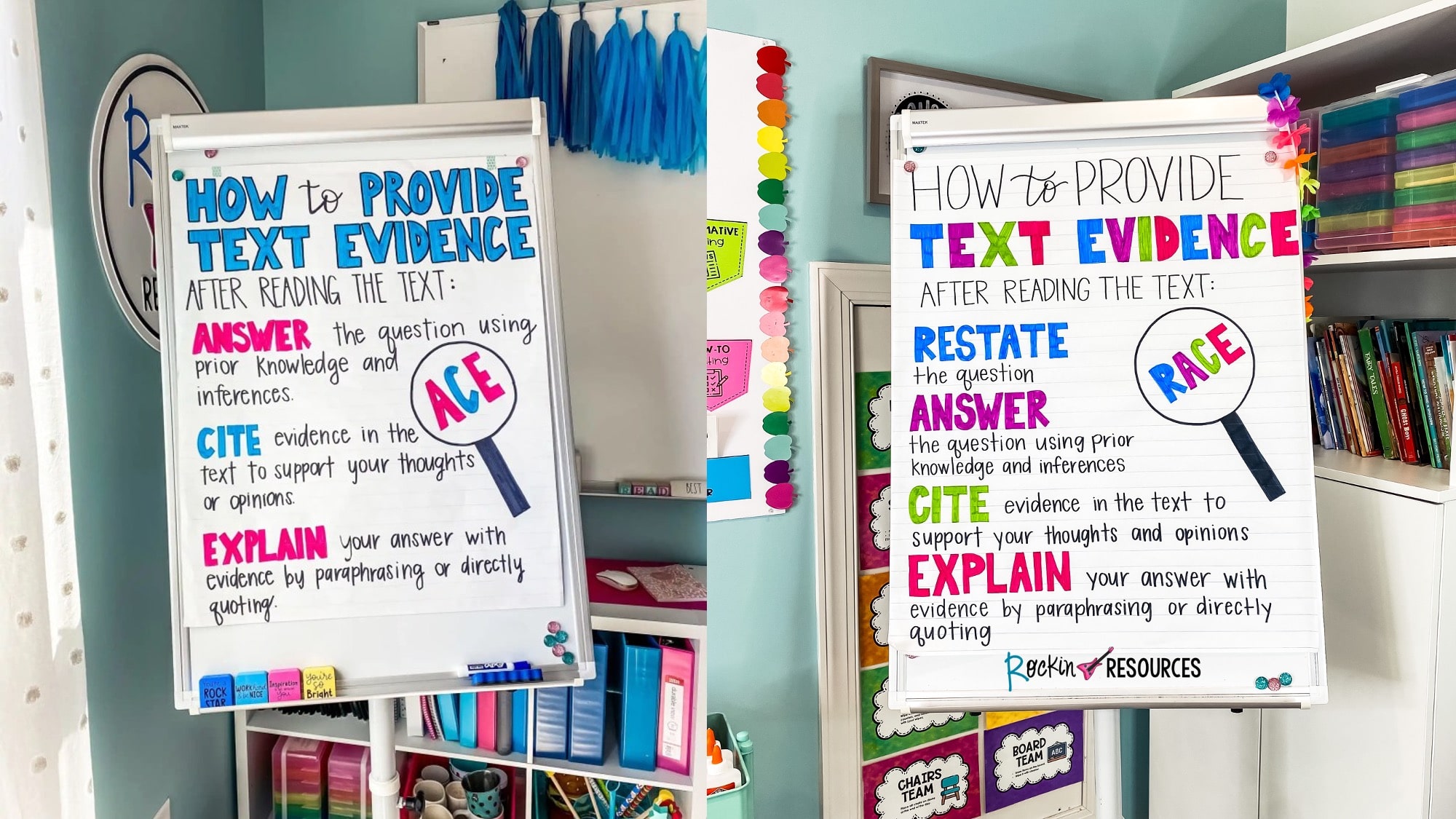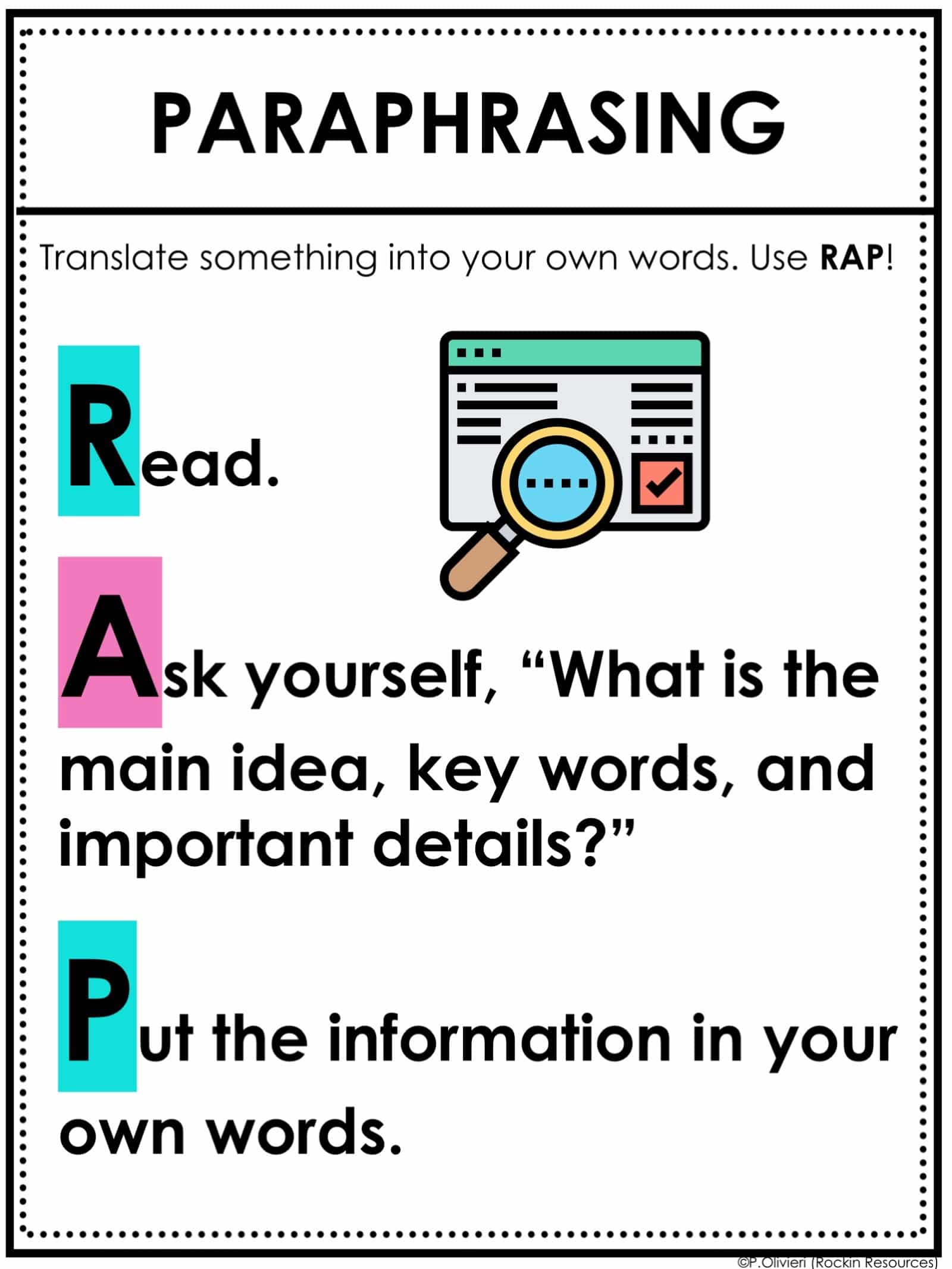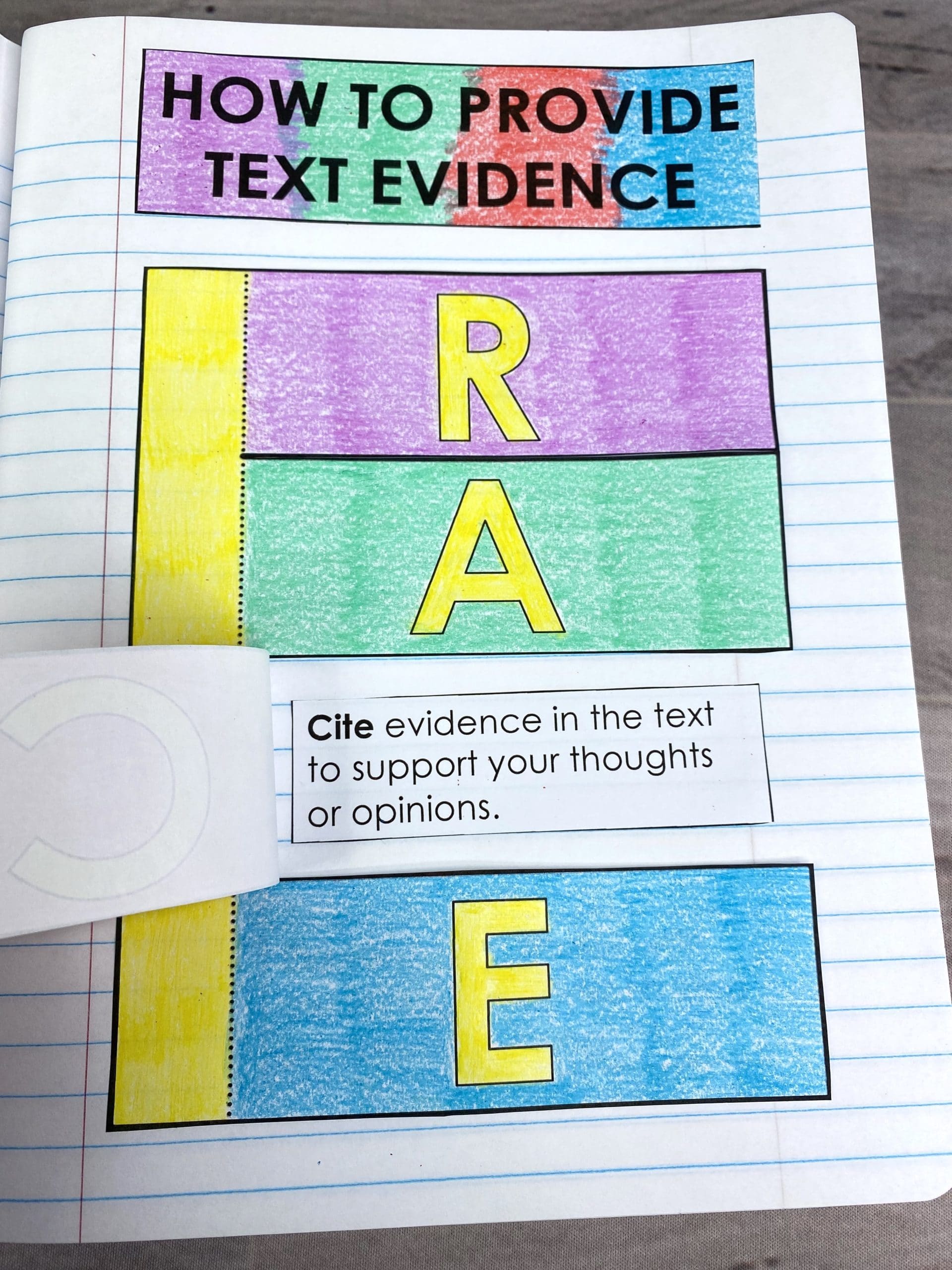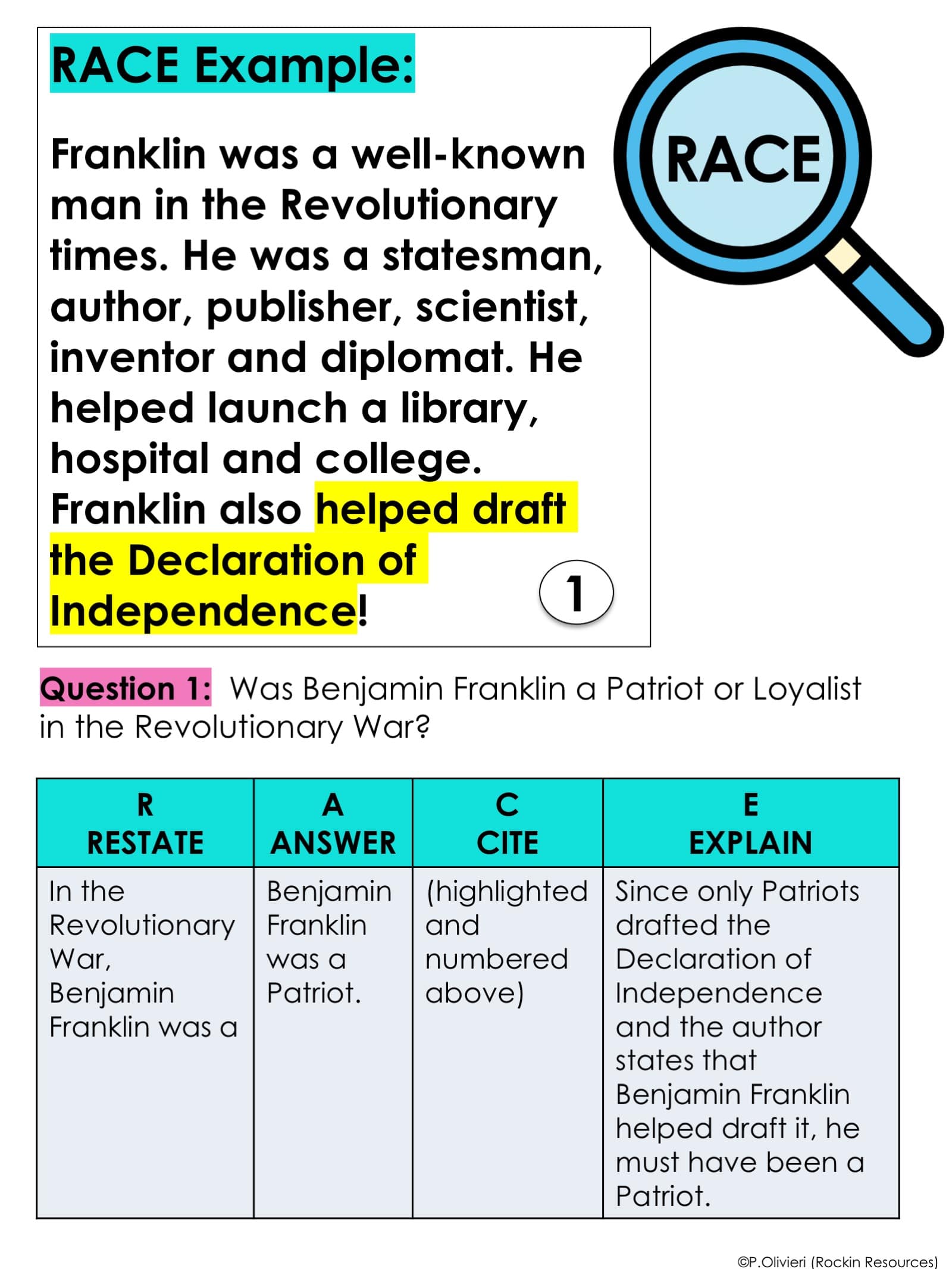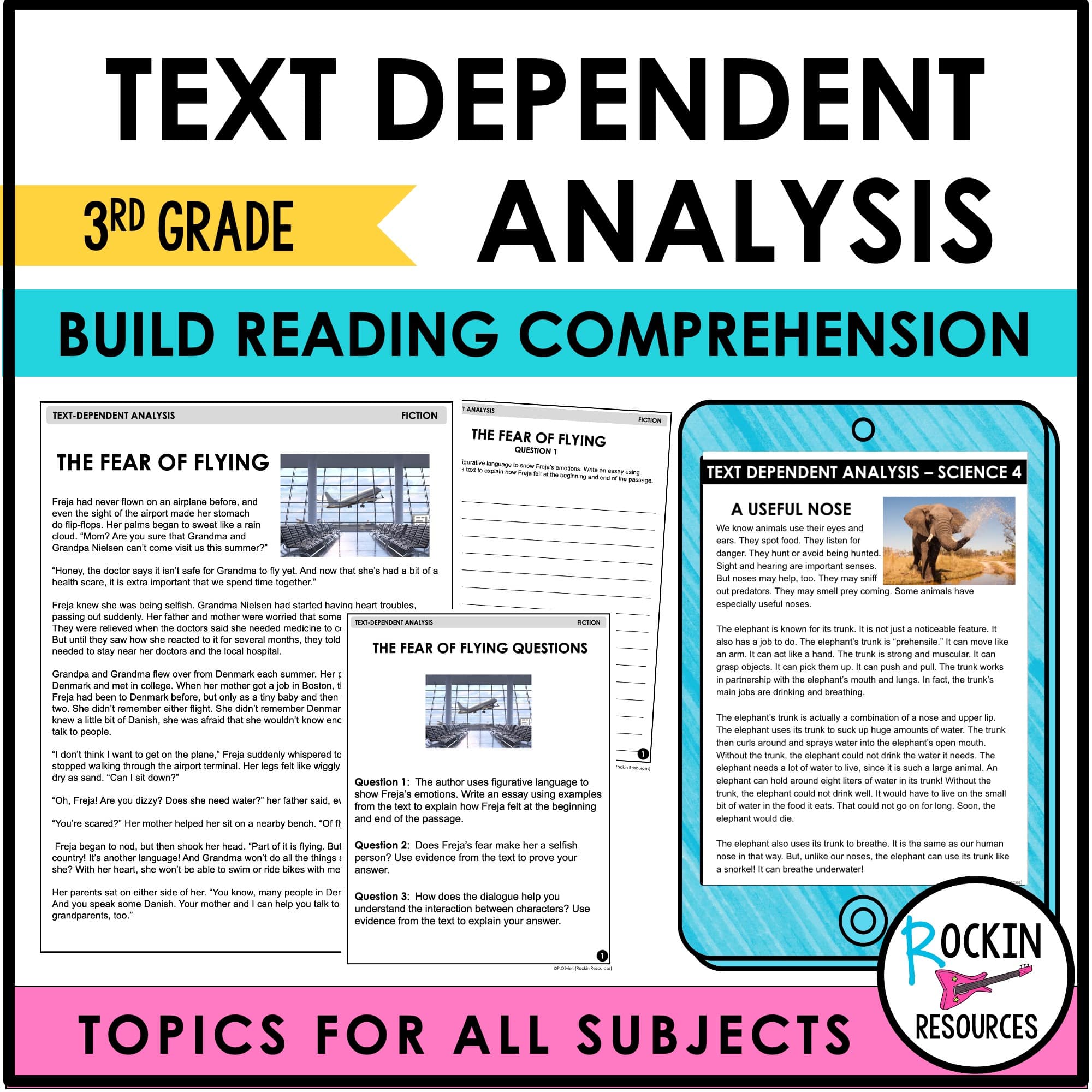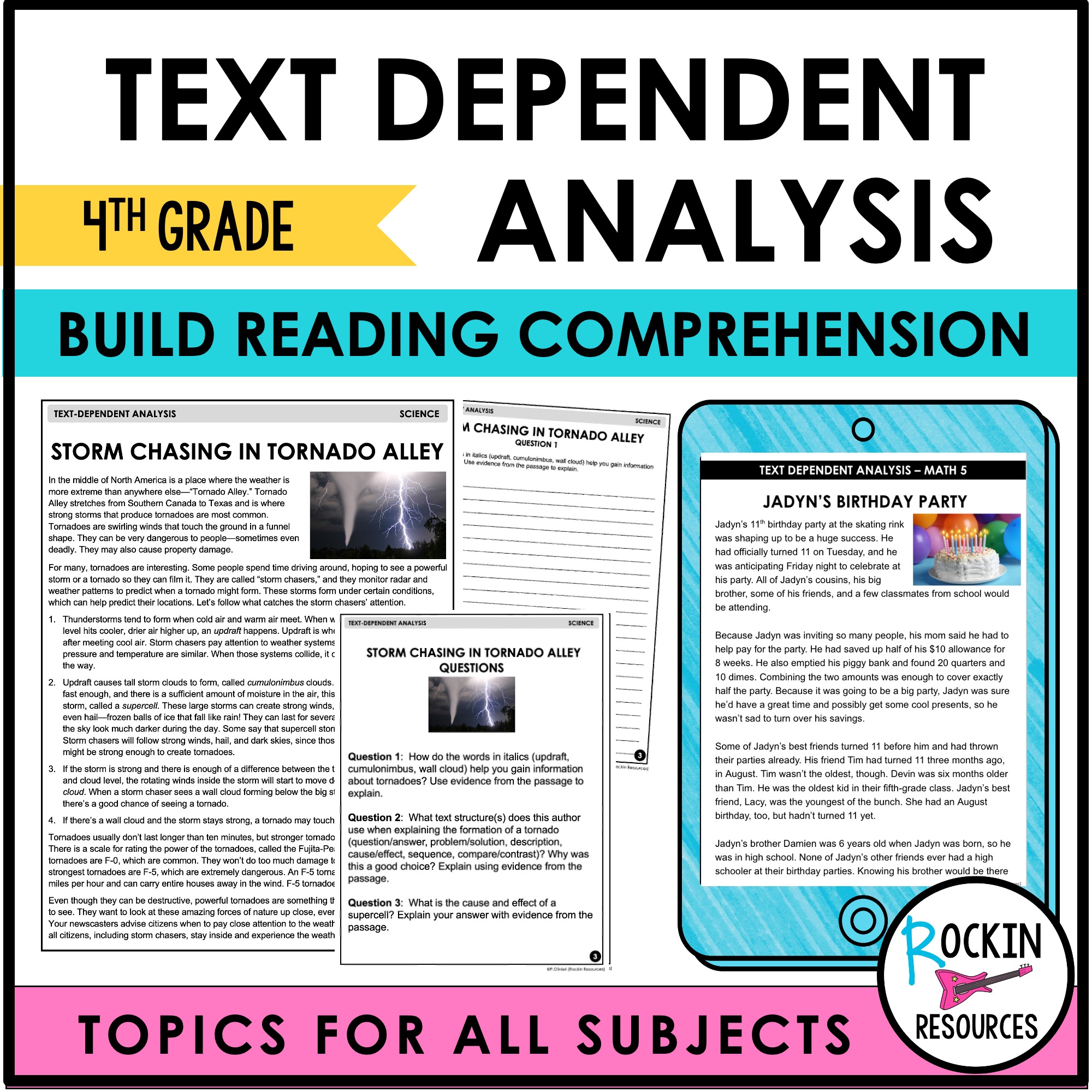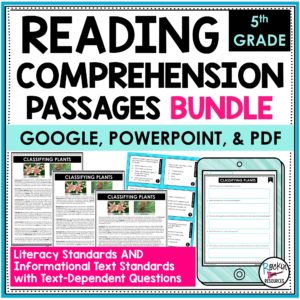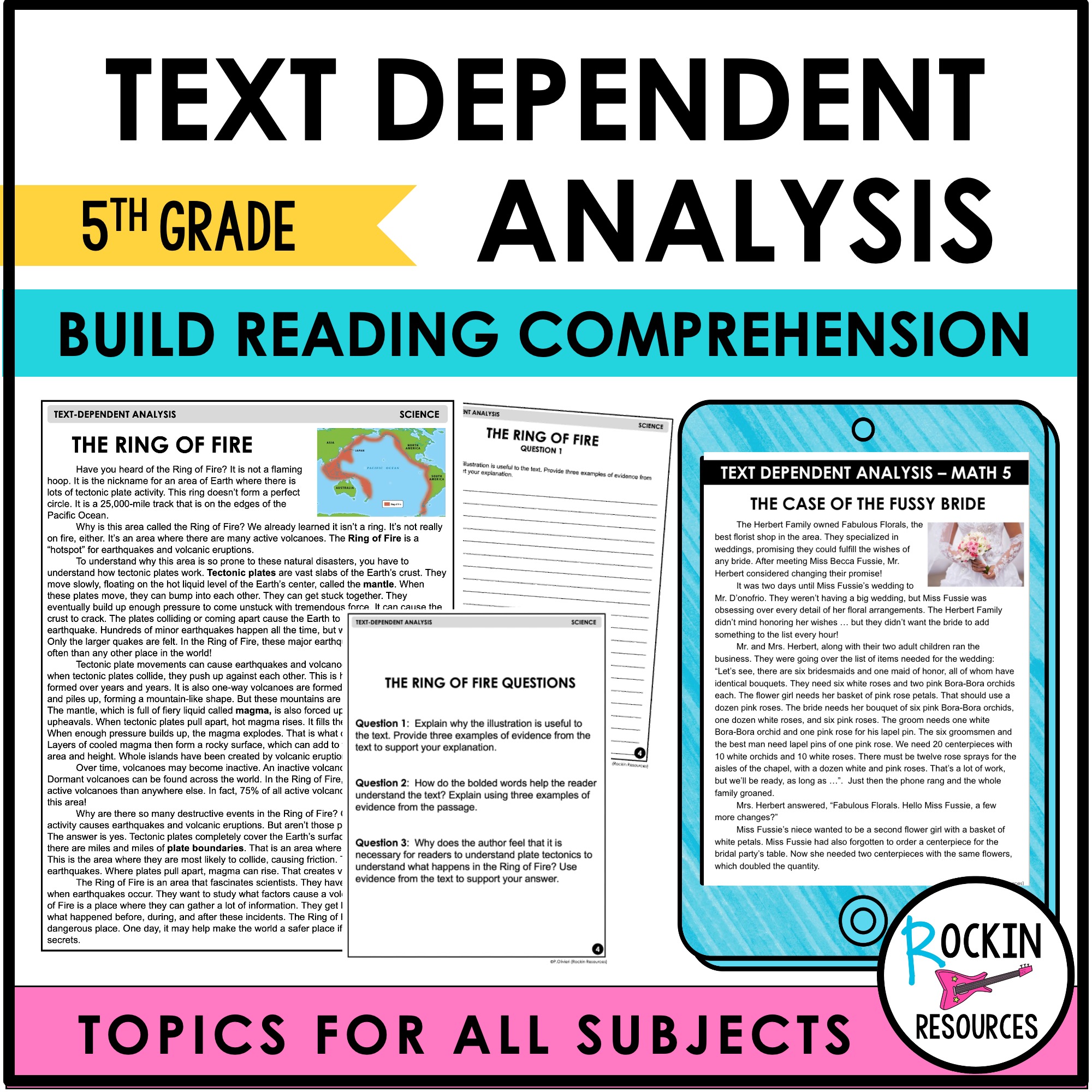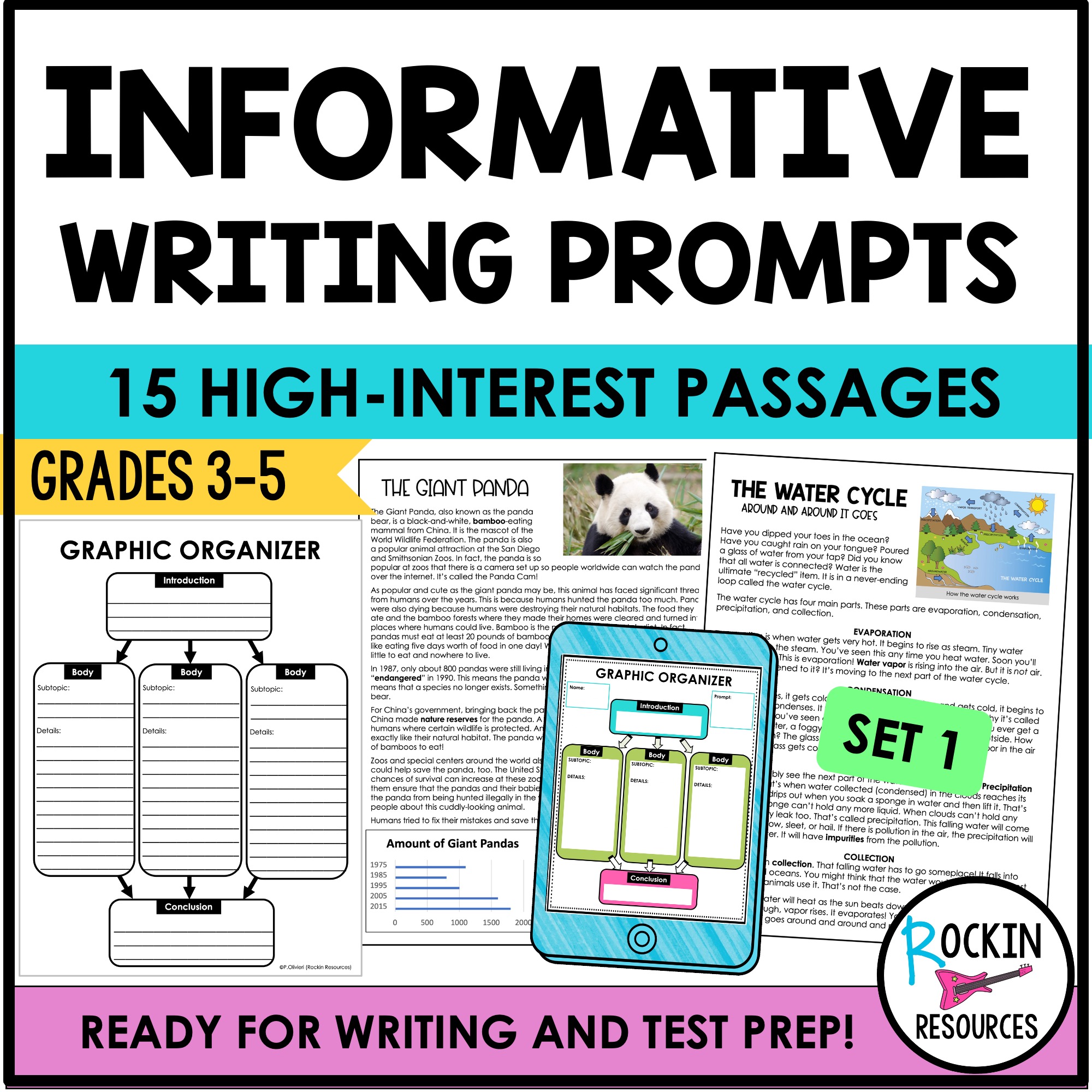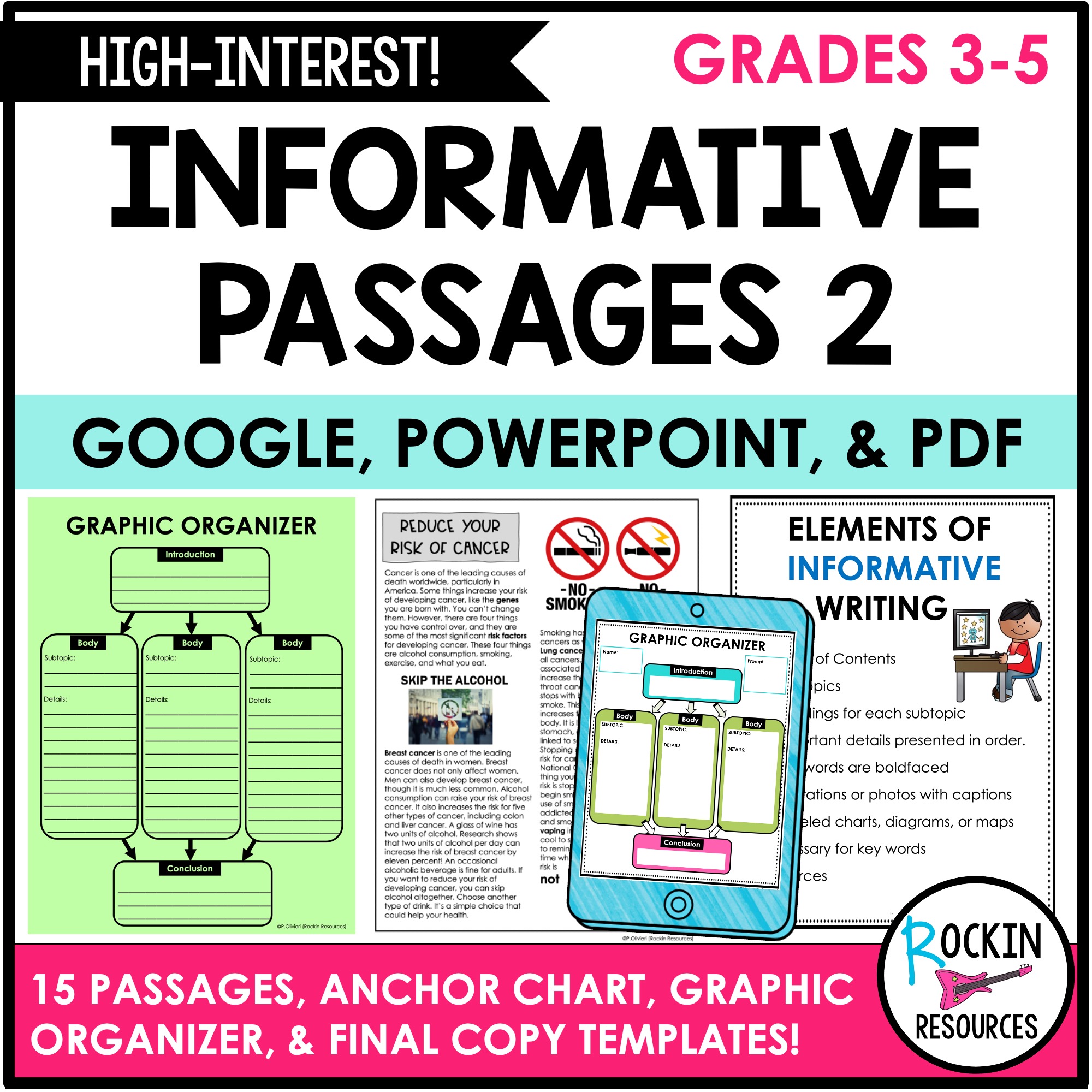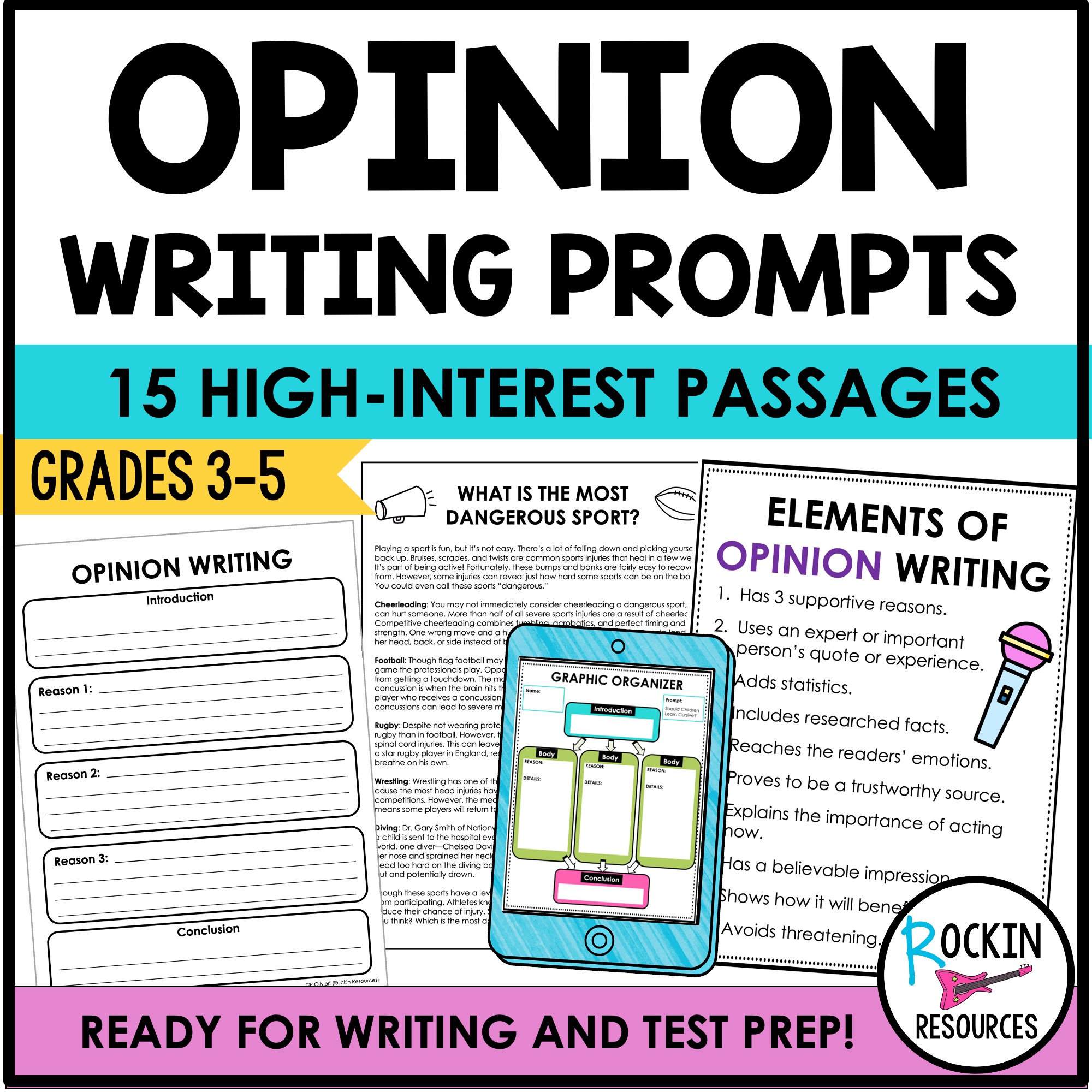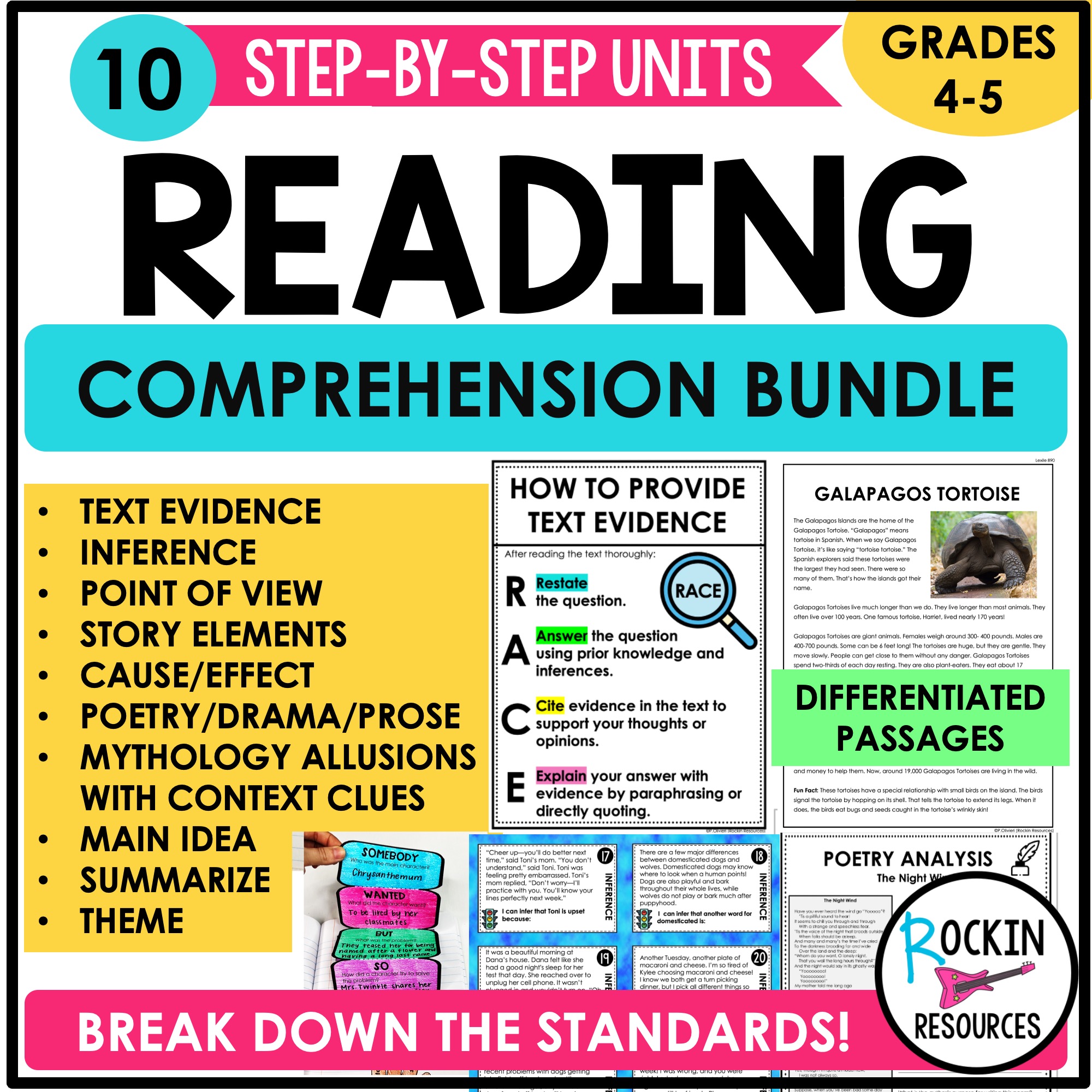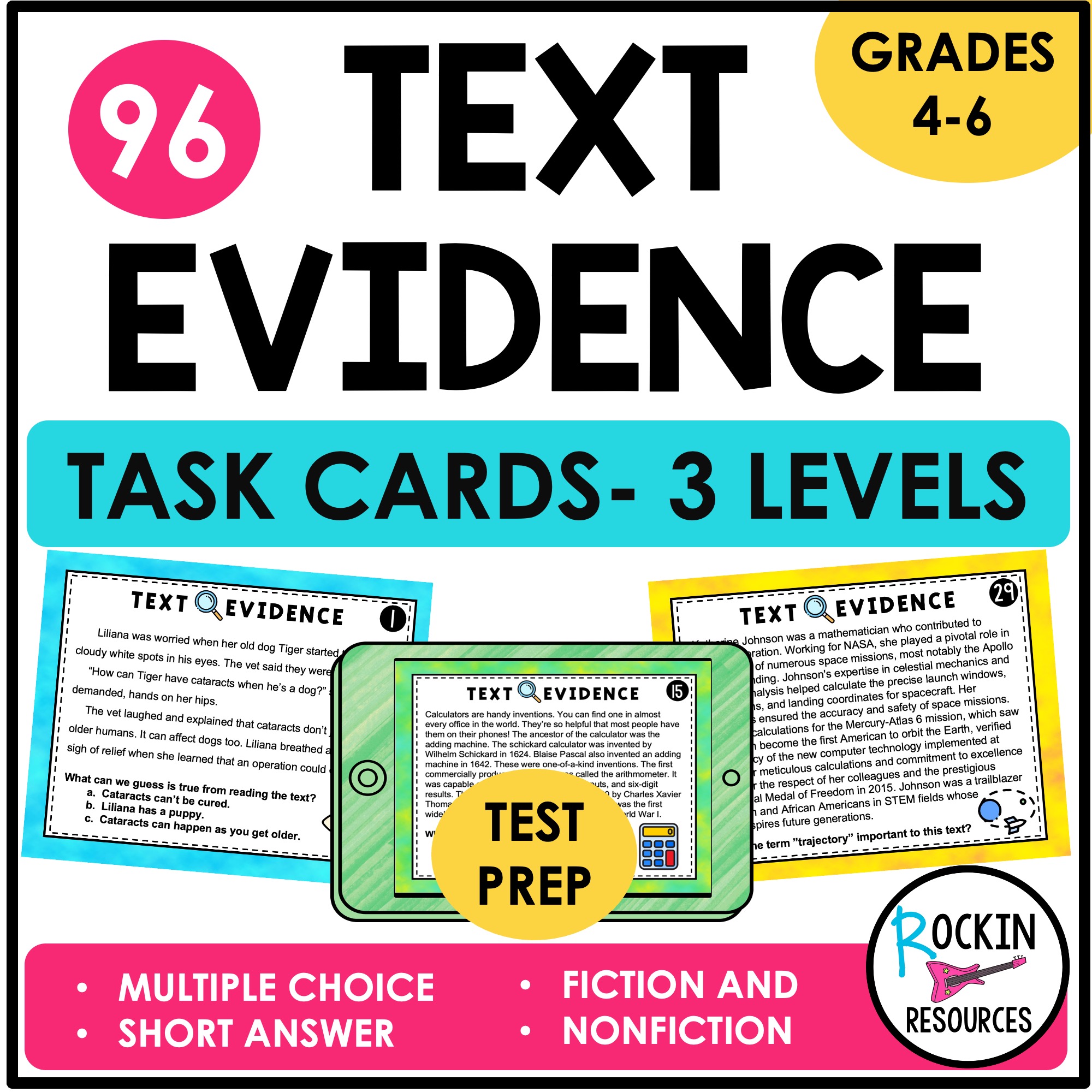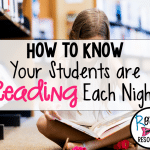Are your students having trouble finding answers and citing evidence in their reading? This STEP-BY-STEP process scaffolds through reading strategies to help your students be successful! Students will learn the acronyms for ACE, RACE, and RAP to provide them with the proper tools for citing evidence effectively along with tips to keep them engaged!
To teach the following lessons, each student will need a reading passage they can highlight, a pencil, a notebook for taking notes, a variety of colorful highlighters, and magnifying glasses (optional). Follow these steps in this suggested order:
1. Explain the meaning of text evidence.
Text is written work.
Evidence is proof.
Text + Evidence is citing proof in the reading.
2. Read through the text thoroughly.
It is helpful to read through the text independently and then together. That way struggling readers will be able to hear words that they may not have understood or read correctly.
3. Introduce RACE or ACE: (RESTATE) ANSWER, CITE, EXPLAIN
Provide an anchor chart for your visual learners. Display it so the whole class can see. Discuss each letter and tell your students that they will be using this acronym when they become ACE OR RACE Detectives. This will get them excited to learn about RACE OR ACE!
Teachers who use RACE use the R to ask the students to restate the question. Teachers who use ACE ask students to restate the question in the letter A for their answer.
R- Restate the question.
Example: Why did Paul Revere ride through the towns?
Answer: Paul Revere rode through the towns because….
Teachers: Practice restating the question with students. Provide questions and restate them together.
A- Answer the question using prior knowledge and inferences.
(Restate the question in your answer if using ACE.)
Prior Knowledge: When a reader has previous experience or has already read about a particular topic, he will have some insight or knowledge to the topic before reading it. Having prior knowledge on a topic will help the reader comprehend it better than someone with no prior knowledge. It is almost like having the upper hand if someone is already familiar with a topic. It provides extra support to the reader’s thinking process.
Inferring: It is an educated guess or reading facts and evidence to reach a logical conclusion or opinion. Making inferences while reading is a strategy that will help you understand the text at a deeper level. It is best to draw a conclusion or form an opinion by finding two or more supporting details in the reading passage. It also helps to look for words or phrases that may express a positive or negative tone. Learn how to infer HERE.
C- Cite evidence in the text to support your thoughts or opinions.
When answering questions about a reading assignment, look back at the text and find proof for the answers within the text. Highlighting the text is an effective approach to mark the evidence! Do you want your students engaged in this activity? Provide magnifying glasses. You can get a class set pretty cheap HERE! Students will get excited to dig deeper in the text to search for the evidence!
Do you want to motivate them even more? Have students color–code the answers. A little bit of color and they are more interested in their work! On the example, you will see numbers. Numbering the highlighted area is useful especially if you plan to discuss, review on want students to show where they got the answer to each question.
E- Explain your answer with evidence by paraphrasing or directly quoting.
Paraphrasing: The author explains…. The text shows…… Use RAP: Read, Ask yourself questions, Put the information in your own words.
Quoting: The author says, “…” The text states, “…..” Quoting is copying exactly what the author is saying in your answer. Make sure to use quotation marks!
4. Take Notes
Students should take notes on all of the acronyms. It is a valuable tool for them to use with future assignments. Interactive writing notebooks are a great way to get students motivated, but if you don’t have the materials or time is a factor, I have two suggestions. Students can take traditional notes from the anchor charts, or you can make mini-anchor charts for students to paste into their notebooks. I like to offer differentiated notes. One version with all the notes provided, one with fill-in-the-blanks, and one where students write all the notes.
5. Practice
Once students have a firm understanding of RACE OR ACE, give them a GRAPHIC ORGANIZER chart for practice as a whole group, small group, or partners. Review the correct answers together.
Grab a FREE ACE OR RACE CHART:
6. Apply
Students now have the strategies to use when providing text evidence from their reading. They should be able to apply this knowledge when answering questions!
I hope you found the TEXT EVIDENCE strategies in this post useful and your students become RACE OR ACE detectives with a deeper understanding of the text!
Another related post you might want to check out: STRATEGIES TO TEACH TEXT DEPENDENT ANALYSIS
If you find these lessons valuable, learn more about the full TEXT EVIDENCE UNIT prepped and ready for you. It includes lessons, anchor charts, examples, interactive notebook pages, practice sheets, differentiated passages, task cards, charts, and assessment! It also includes a GOOGLE AND POWERPOINT VERSION FOR DISTANCE LEARNING! THERE IS AN ACE AND A RACE VERSION!!!!
DISCOVER RELATED RESOURCES:
-
3rd Grade Reading Comprehension Passages Bundle
Original price was: $41.99.$24.99Current price is: $24.99. -
4th Grade Reading Comprehension Passages Bundle | GOOGLE
Original price was: $41.99.$24.99Current price is: $24.99. -
5th Grade Reading Comprehension Passages Bundle
Original price was: $41.99.$19.99Current price is: $19.99. -
Step-by-Step Reading Skills for Reading Comprehension Bundle 1
Original price was: $83.92.$68.99Current price is: $68.99.


